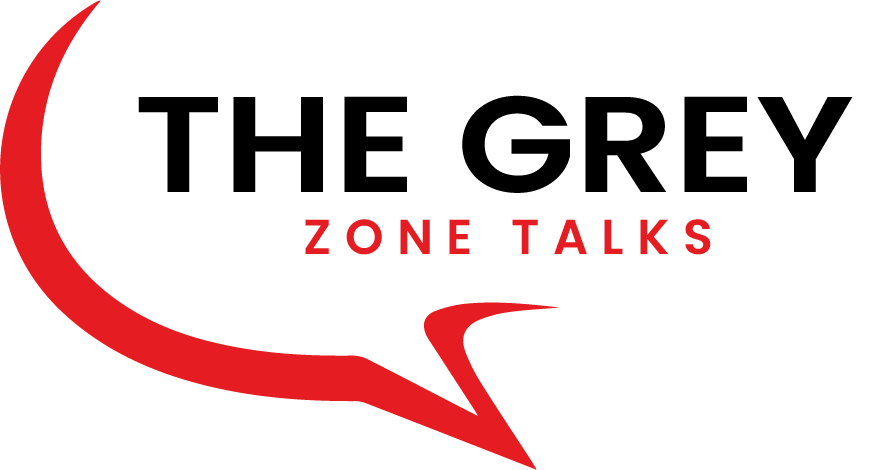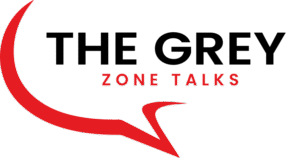Leaving a toxic relationship seems like the obvious choice — yet for many, it’s not that simple.
They stay even when it hurts, when the love turns to fear, and when every conversation feels like walking on glass. Outsiders often wonder, “Why don’t they just leave?” But the truth is rarely logical — it’s deeply emotional and psychological.
Behind every person who stays lies a story — of trauma bonding, emotional dependency, and the quiet erosion of self-worth. What looks like weakness from the outside is often the result of manipulation, fear, and learned helplessness, patterns that make breaking free feel impossible.
Most people in emotionally abusive relationships don’t realize how strong the psychological trap is until they’re already caught in it. The cycle of affection and cruelty, apology and relapse, creates a confusing bond that feels like love — but is built on fear. The brain, conditioned by moments of tenderness between pain, begins to crave the very person who causes the suffering.
It’s not just love that keeps people there — it’s hope. The hope that things will get better. The belief that love can heal someone who’s hurting you. And sometimes, it’s the fear of starting over, the shame of walking away, or the cultural expectation that love means endurance, no matter the cost.
Toxic relationships often begin beautifully. They start with validation, affection, and connection — the kind that feels rare and intoxicating. Slowly, love becomes conditional. Kindness turns into control. And yet, the memory of who they once were — the person who once made you feel safe — keeps you hooked.
In the mind of someone caught in a trauma bond, leaving doesn’t feel like freedom — it feels like loss. The body reacts to separation with anxiety, guilt, and panic, because pain has become entangled with love.
So, why do people stay in toxic relationships?
Because the human heart confuses chaos for passion, and the mind mistakes survival for love.
In this article, we’ll explore the hidden forces that keep people tied to unhealthy relationships — from trauma bonding and learned helplessness to attachment insecurity and cultural conditioning.
We’ll also uncover the beginning of healing — recognizing that leaving is not betrayal, but an act of self-rescue.
💢 Trauma Bonding: When Love and Pain Become Entangled
Love shouldn’t hurt — yet, for those caught in toxic relationships, pain and affection become almost indistinguishable. What begins as passion slowly transforms into confusion, and before you realize it, you’re holding onto someone who both wounds and soothes you.
A trauma bond forms when cycles of abuse and affection create an emotional addiction. It’s not just about control; it’s about chemistry. One moment, there’s tenderness — a text that melts your heart, an apology that feels sincere, a night that almost feels normal again. The next, there’s distance, anger, silence, or blame.
And so, you wait for the next wave of love, desperate to feel safe again.
Your brain starts to equate their affection with relief — like a hit after withdrawal. Every “I’m sorry” or sudden gesture of kindness floods you with dopamine and oxytocin, the same chemicals that make love feel euphoric. But this isn’t love; it’s addiction disguised as devotion.
You start believing that they’re not just your problem — they’re also your cure.
The same person who broke you becomes the only one who can put you back together.
You tell yourself, “They didn’t mean it.”
“They were just angry.”
“They love me, they just don’t know how to show it.”
Every moment of affection becomes proof that things can go back to the way they were — back to the version of them who made you feel seen, loved, and chosen. You hold onto that version, even when it barely exists anymore.
The deeper you fall into this emotional pattern, the harder it is to recognize it as abuse. You start normalizing chaos, telling yourself this is what real love must be — intense, unpredictable, consuming. But that’s not love. That’s survival.
Trauma bonding rewires your nervous system. It teaches you to find safety in pain and loyalty in fear. You cling to the relationship because leaving feels like losing a part of yourself — the part that still hopes, still believes, still remembers the good days.
It’s why so many people stay long after the love has turned toxic:
because leaving the person feels like losing the feeling that once made life bearable.
It’s not about weakness. It’s about the way the human mind attaches itself to the very thing that breaks it.
It’s not love — it’s survival dressed as attachment, and the first step toward healing is realizing the difference.
“You don’t stay because you love them. You stay because you’re afraid of who you’ll be without them.”
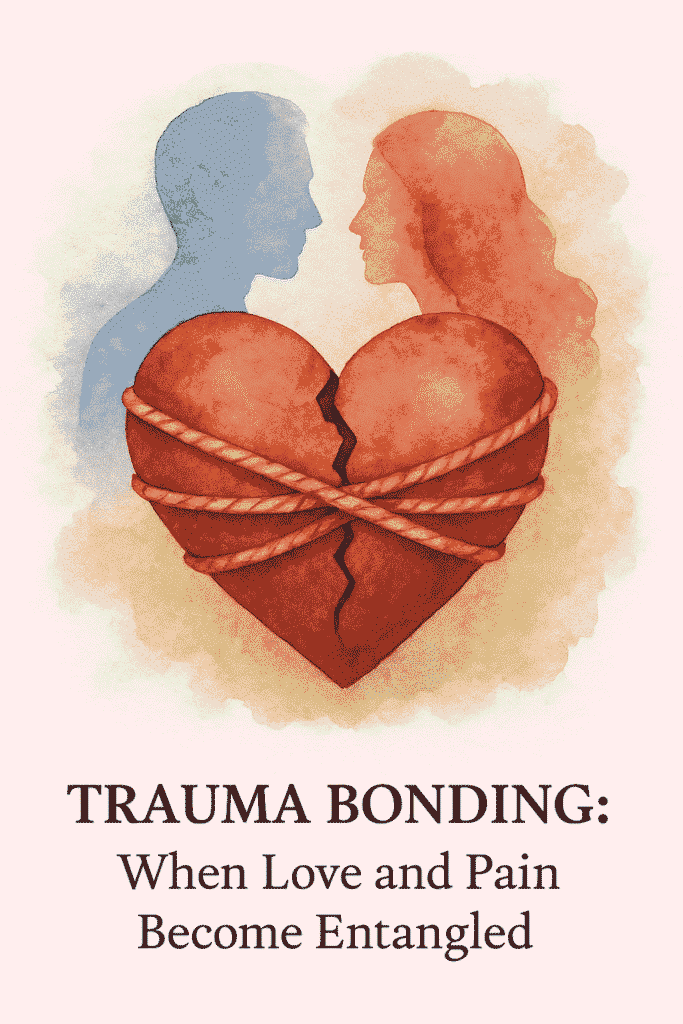
🧍♀️ Learned Helplessness: When You Stop Believing You Can Leave
At some point, the fight to be loved becomes exhausting. You stop trying to fix things, stop speaking up, stop hoping. You begin to move through the relationship carefully — like tiptoeing through a room full of broken glass. You know where not to step. You know what words trigger anger, what silences mean danger. You learn to survive instead of live.
This is what psychologists call learned helplessness — a quiet, invisible prison built over time. It’s what happens when you’ve tried everything — to please, to talk, to forgive — and nothing changes. Eventually, you stop believing that leaving or speaking up will make a difference.
So you shrink. You start existing in fragments, trying to take up less space, trying not to be the problem. You convince yourself that staying is easier than fighting — or that maybe you deserve what’s happening. And that’s how emotional abuse wins: not by force, but by wearing you down until you no longer trust your own strength.
Every time you think about leaving, fear takes over. What if they change after you’re gone? What if no one else ever loves you like they did at the beginning? What if you’re the one to blame?
You’ve been conditioned to believe that chaos is your fault, that peace is earned only through patience, and that love means enduring what hurts. You start confusing control for stability, silence for safety, and endurance for strength.
The saddest part is that learned helplessness doesn’t look like hopelessness to the outside world. You may smile, go to work, post happy pictures — all while drowning internally. You function on autopilot, living a life that looks normal but feels like surviving a storm that never ends.
This psychological trap isn’t a sign of weakness; it’s the mind’s way of protecting itself from further disappointment. When you’ve tried everything and failed, surrender starts to feel like peace — even when it’s just another form of captivity.
“Sometimes, people don’t stay because they want to. They stay because they’ve forgotten how to leave.”
But deep beneath that numbness, a tiny voice still exists — the part of you that remembers what it felt like to feel free. It whispers in quiet moments, reminding you that peace doesn’t have to hurt, that safety doesn’t require silence, that love doesn’t demand your suffering.
Healing begins the moment you listen to that voice again — when you stop surviving and start remembering who you were before the hurt began.
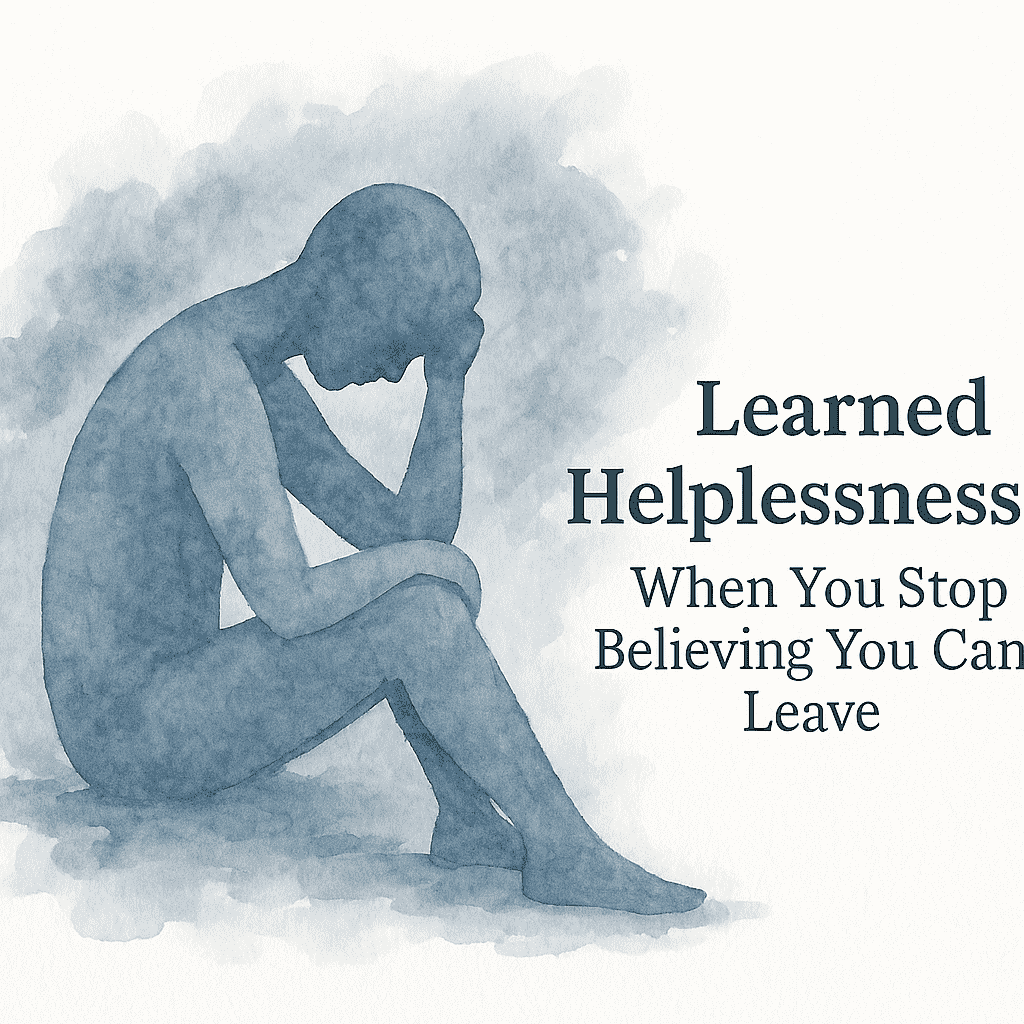
💔 Attachment Insecurity: The Fear of Being Alone
After a long time in a toxic relationship, love stops feeling like safety — it starts feeling like oxygen. You need it, even when it hurts. You cling to it because the idea of losing it feels worse than the pain of staying. That’s not weakness — that’s attachment insecurity, and it runs deeper than most people realize.
Many people who find themselves unable to leave toxic relationships didn’t learn what stable love feels like. Maybe love was something they had to earn growing up — through obedience, silence, or perfection. Maybe affection was given and taken away without warning. So as adults, chaos feels like comfort. Inconsistency feels familiar. They confuse anxiety with affection, because love and fear arrived in the same breath for most of their lives.
You start to crave the person who makes you anxious, because in some twisted way, that anxiety feels like connection. You feel alive when they text, empty when they don’t. Their attention becomes your validation; their withdrawal becomes your punishment. You start to measure your worth by how close you are to them — even if that closeness costs you your peace.
This is how attachment insecurity binds people to toxic love. It convinces them that being alone is unbearable. That loneliness means rejection, not freedom. That silence is emptiness, not peace. And so they stay — not because they’re happy, but because being alone feels like disappearing.
People with anxious attachments often carry invisible fears:
- “If I leave, they’ll forget me.”
- “What if no one else loves me?”
- “What if they finally change for someone else?”
So, they hold on tighter. They over-explain. They apologize for things they didn’t do. They love harder, thinking maybe more love will fix what’s broken. But love can’t fix a wound it didn’t cause.
Attachment insecurity is like trying to fill a leaking cup — no matter how much you pour in, it never feels enough. The emptiness doesn’t come from lack of love; it comes from lack of security — something no toxic partner can ever give.
And yet, the fear of being alone keeps people stuck in the cycle. Because loneliness, for someone with deep attachment wounds, doesn’t just mean being without someone — it feels like being unseen, forgotten, and unworthy. It’s not about missing the person; it’s about missing the version of yourself that felt loved when they were around.
The truth is, you can’t heal in the same place that made you believe love requires pain.
You can’t grow while trying to convince someone to see you when they’ve already decided to look away.
You can’t find peace when your heart is constantly at war between leaving and holding on.
Healing attachment insecurity starts when you stop asking someone else to make you feel enough — and begin rebuilding that safety inside yourself. It’s about learning that solitude isn’t emptiness; it’s space. Space to breathe. To feel. To rediscover the parts of you that disappeared trying to be loved.
“Sometimes, being alone isn’t loneliness — it’s the first quiet moment your heart has had in years.”
You begin to realize that you were never afraid of being alone — you were afraid of being with yourself. But that’s where true healing begins: when you learn that you are your own safe place.

🌍 Cultural and Social Conditioning: When Society Normalizes Suffering
Not all cages are made of metal. Some are built from words like duty, patience, and sacrifice.
For many, leaving a toxic relationship isn’t just about walking away from a person — it’s about walking away from everything they’ve been taught to believe about love.
From a young age, society tells us that love is supposed to endure. We’re taught that “real relationships take work,” that “no one is perfect,” and that “you don’t give up on someone you love.” On the surface, those messages sound noble. But when applied to emotionally abusive relationships, they become chains disguised as values.
Cultural conditioning runs deep. In many families and communities, staying is considered virtuous — a sign of loyalty, maturity, and moral strength. Leaving, on the other hand, is often painted as selfish, weak, or shameful. For women especially, culture has long romanticized endurance: the idea that a good partner forgives endlessly, holds the family together, and suffers quietly “for love.”
Religious and cultural traditions can reinforce these beliefs, too. “Love endures all things,” “marriage is forever,” or “God hates divorce” — phrases meant to honor commitment can become weapons of guilt. When you grow up hearing that leaving makes you a failure, you start to see pain as proof of devotion.
This is why so many people stay in relationships that break them — because leaving feels like betraying more than a person. It feels like betraying a belief system, a family, a cultural identity. Society praises resilience, but often forgets that resilience without boundaries is self-destruction.
There’s also the fear of judgment. The whispers. The looks. The questions that sting more than they should:
“Did you even try?”
“Maybe you were too demanding.”
“Every relationship has problems.”
So you stay — not because it’s safe, but because it’s safer than being misunderstood. Because explaining emotional abuse to people who’ve never experienced it can feel impossible.
Because it’s easier to say “we’re working on it” than to admit, “I’m breaking.”
And then there’s the financial and social dependence that culture often ignores. Many people — especially women — stay because leaving means instability, poverty, or isolation. Some have children, some have nowhere else to go, some have been cut off from friends and family by years of manipulation. When society doesn’t provide safety nets, it silently pushes people back into the arms of their abusers.
The truth is, love doesn’t require suffering.
But culture has a strange way of glorifying pain — of turning endurance into a badge of honor. We call it loyalty, but what it really is, is fear wrapped in obligation.
Breaking free from that mindset requires unlearning decades of conditioning. It’s about realizing that love isn’t proven by how much pain you can take, but by how much peace you can sustain. It’s about choosing yourself, even when the world tells you that you shouldn’t.
“Sometimes, the bravest thing you can do is disappoint the expectations that keep you small.”
Walking away isn’t rebellion — it’s reclamation. It’s rewriting what love means for you, not what the world says it should be.

💫 Hope and Cognitive Dissonance: The “Maybe They’ll Change” Trap
One of the hardest things to admit is that sometimes, the person who hurts you is also the person you’re still hoping will heal you.
It’s the cruel paradox of toxic love — the same heart that breaks you keeps convincing you to stay.
This is what psychologists call cognitive dissonance, but what it really feels like is emotional tug-of-war. You hold two truths at once:
You know this person hurts you.
And yet, you still believe they can change.
Every small moment of tenderness feels like a sign — proof that the good in them still exists. A kind message, a small apology, a rare laugh shared after a long fight. It’s never enough to rebuild the relationship, but just enough to keep the hope alive. And hope, in toxic relationships, becomes the quiet poison that numbs you to reality.
You start living off crumbs of affection, telling yourself it’s a feast. You start rewriting the story to make sense of the pain. “They didn’t mean it.” “They’re trying.” “They’ve had a hard past.” You bend your heart into shapes it was never meant to hold, because believing in their potential hurts less than accepting their truth.
Every time you forgive them, every time you stay, your mind finds a way to justify it. That’s what cognitive dissonance does — it protects you from emotional chaos by rewriting the narrative.
It tells you staying is strength.
That loving them is compassion.
That enduring the pain means you’re loyal, patient, understanding.
But here’s the quiet truth no one tells you:
Hope can become a trap when it keeps you stuck in the same story that’s breaking you.
You stop noticing how small you’ve become trying to make the relationship work. You start walking on eggshells, smiling when you want to cry, pretending everything is fine just to keep the peace. You trade authenticity for acceptance, and slowly, the version of you that used to laugh freely, speak honestly, and dream boldly begins to fade.
It’s not that you can’t see the truth — it’s that seeing it means letting go of the dream. And letting go of the dream feels like grieving a future you still ache for. That’s why so many people stay. Not for who their partner is, but for who they hoped they could become.
“You don’t miss them — you miss who you thought they were.”
Hope is a beautiful thing — it’s what keeps humanity alive — but in the wrong hands, it can be weaponized. In toxic relationships, hope becomes the chain that binds you to your own pain. It keeps you waiting for change that never comes, for love that only exists in moments, for peace that vanishes as soon as you taste it.
Healing begins when you finally stop waiting for their transformation and start focusing on your own. When you realize that it’s not your job to save someone who keeps drowning you to stay afloat. When you accept that love isn’t supposed to feel like constant confusion.
You start to understand that closure doesn’t come from their apology — it comes from your decision to stop explaining the hurt.
That peace isn’t found in another chance — it’s found in the moment you stop begging for one.
And that sometimes, the kindest thing you can do for both of you is walk away, even when it breaks your heart.
“The hardest goodbye is to the version of someone you created just to survive them.”
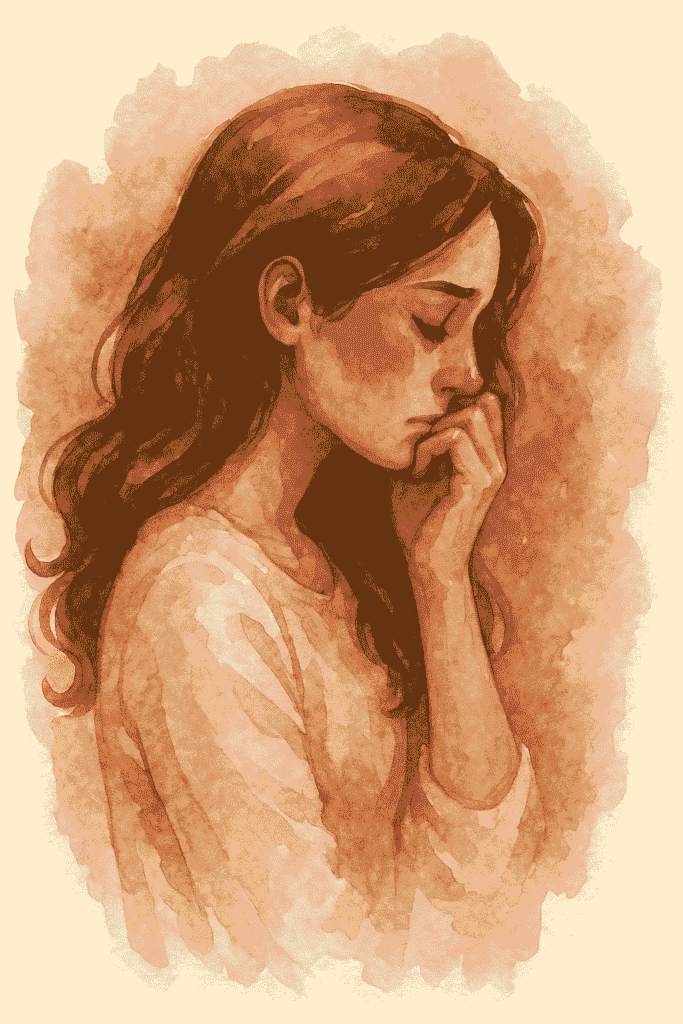
🌿 The Path to Healing: Recognizing the Cycle
Healing doesn’t begin the moment you leave — it begins the moment you finally see.
See the pattern.
See the manipulation.
See the way your love was used to keep you small.
For many who’ve lived through toxic relationships, leaving is not the end — it’s the beginning of learning how to live again. When you’ve spent months, maybe years, being conditioned to believe that love equals suffering, peace can feel strange. Quiet feels unfamiliar. Safety feels suspicious.
That’s the residue of trauma. It lingers, whispering that you’re not enough on your own, that something is missing, that maybe you should have tried harder. But healing means learning to talk back to those whispers — to remind yourself that you were enough all along, you just loved someone who made you forget it.
Recognizing the cycle is the first act of liberation. It’s the moment you stop asking, “Why did they do this to me?” and start asking, “Why did I think I deserved this?”
It’s when you stop romanticizing potential and start valuing peace. When you stop replaying memories looking for answers, and start focusing on creating new ones.
Healing isn’t about hating the person who hurt you — it’s about detaching from the version of yourself who accepted the pain. It’s about forgiving yourself for staying, for trying, for hoping. Because none of those things make you weak. They make you human.
The path to healing isn’t linear. Some days, you’ll feel free. Other days, you’ll crave the comfort of the chaos you escaped. You’ll scroll through old messages, listen to songs that remind you of them, wonder if they miss you. That’s okay. Healing isn’t about never looking back — it’s about not staying there when you do.
You learn that closure doesn’t come in a conversation — it comes in acceptance. You stop needing their apology to move on. You stop needing them to acknowledge your pain. Because you realize that peace is something they could never give you — it was something you had to give yourself.
You start rebuilding your life piece by piece: rediscovering what makes you laugh, what makes you feel alive, what makes you you again. You begin to surround yourself with people who make love feel calm instead of chaotic, gentle instead of dramatic, reciprocal instead of earned.
And one day, without even noticing, you’ll wake up and realize you haven’t thought about them in weeks. The ache that once lived in your chest will have turned into space — the kind of space that breathes, expands, and makes room for peace.
“Healing doesn’t mean the past didn’t happen. It means it no longer controls your future.”
Healing is not forgetting. It’s remembering — and choosing differently. It’s learning that love isn’t supposed to hurt, that peace isn’t boring, and that you never have to prove your worth to anyone again.
When you finally step out of the cycle, you understand something profound:
you were never too much, you were just giving your love to someone who couldn’t hold it.
And now, you can finally hold it for yourself.

🩶 Final Reflection: Finding Light in the Grey
Love and pain often coexist in the same breath, blurring the lines between what feels right and what’s familiar.
That’s the hardest part about toxic relationships — they live in the grey zone. Not all bad. Not all good. Just confusing enough to keep you hoping.
But healing begins the moment you stop needing things to be black or white.
When you finally understand that someone can love you and still not be good for you. That you can care deeply for someone and still need to walk away. That staying doesn’t always mean loyalty — sometimes, it means loss.
At The Grey Zone Talks, we believe that life’s truths rarely live in the extremes. They live in the in-between — in the contradictions, in the questions we’re often too afraid to ask.
Because healing doesn’t come from denying the grey — it comes from learning to see clearly within it.
If you’ve ever stayed too long, loved too hard, or blamed yourself for your own pain — know this: you’re not broken. You’re human. You were trying to make sense of love in a world that never taught you what healthy love looks like.
And now that you see it for what it was, you’re already one step closer to freedom.
“The Grey Zone isn’t where you lose yourself — it’s where you begin to find your truth.”
🕊️ Read more reflections and stories like this at The Grey Zone Talks — where we explore the messy, honest, and healing side of being human.


